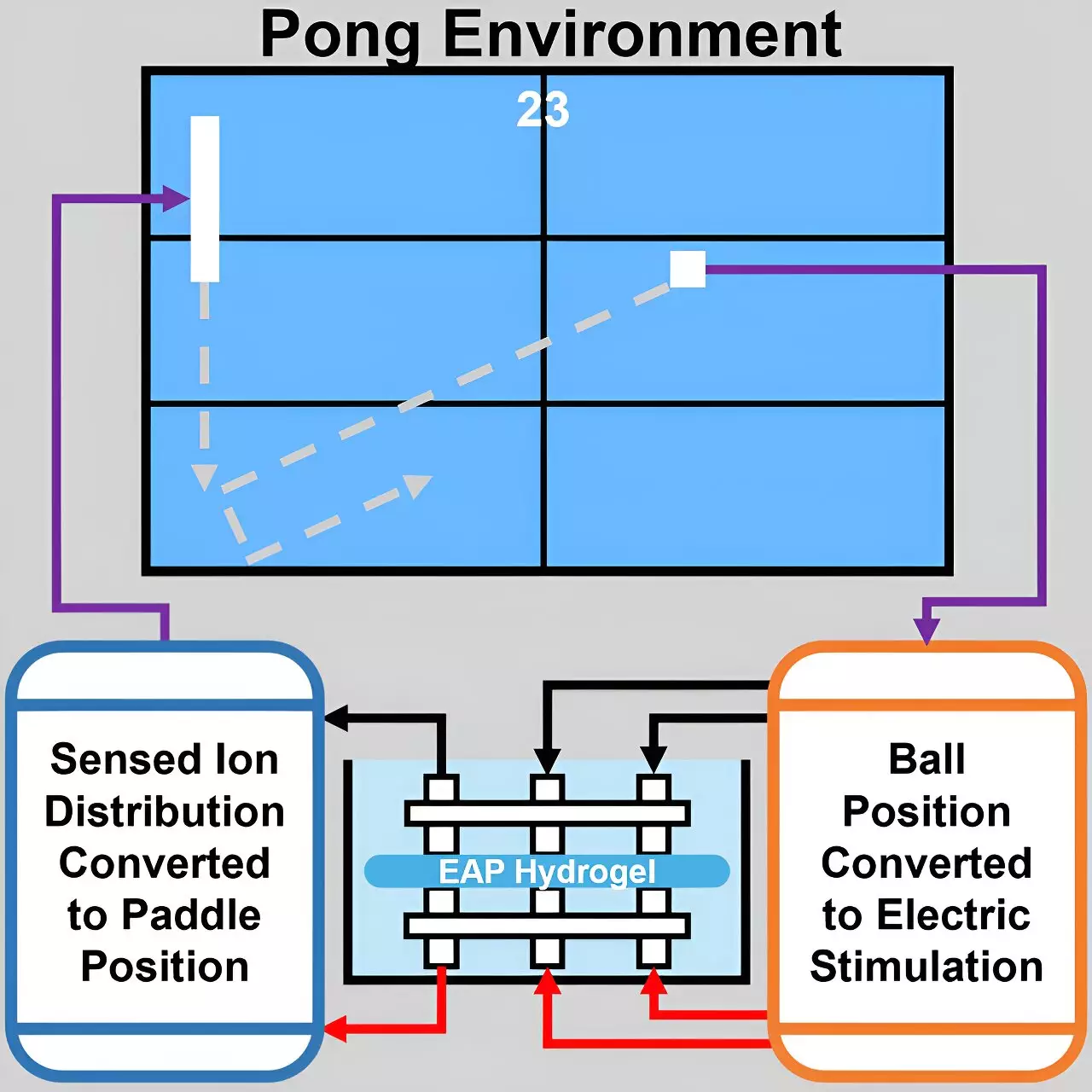A pioneering study led by Dr. Yoshikatsu Hayashi, recently published in Cell Reports Physical Science, reveals that even the simplest synthetic materials, such as hydrogels, can exhibit behaviors typically associated with living organisms and sophisticated artificial intelligence. By interfacing a flexible hydrogel with a computer simulation of the iconic game “Pong,” Dr. Hayashi’s team demonstrated that these materials could learn and adapt, presenting a significant advancement not just in materials science but also in our understanding of learning mechanisms across disciplines.
At the core of this innovative learning behavior is the interaction of charged particles within the hydrogel. As the material is stimulated electrically, it undergoes dynamic changes, allowing it to retain ‘memory’. Vincent Strong, the first author and robotics engineer, emphasizes that the ionic activity in hydrogels parallels the memory functions seen in more complex neural networks. This indicates that hydrogels can acquire a basic form of learning without traditional computing frameworks.
Dr. Hayashi points out that this research bridges the gap between artificial and biological learning systems. Comparing neural networks with hydrogel memory mechanics opens up new avenues for understanding how learning and adaptation can occur through different mediums. The ionic movements in hydrogels effectively replicate the sensory-motor feedback loops that are not only fundamental to biological organisms but also pivotal to artificial intelligence’s learning processes.
The study leans on previous research where brain cells, under electrical stimulation, demonstrated similar learning capacities when engaged in playing “Pong.” This correlation emphasizes the universality of learning mechanisms, suggesting that both artificial and biological systems may utilize analogous principles to acquire new skills. This raises intriguing questions about the potential of other materials to achieve complex learning, prompting researchers to expand their inquiries into various possible artificial systems.
The implications of such research extend beyond cognitive systems. Dr. Hayashi’s team recently investigated another hydrogel’s capacity to synchronize its rhythm with an external pacemaker, mirroring how heart muscle cells contract in unison. This achievement signifies a critical step toward creating models that could replace live animal testing in cardiac research. Dr. Tunde Geher-Herczegh, the lead author of this related study, underscores the significance of understanding the interplay between mechanical and chemical signals in heart research.
Given that cardiac arrhythmias affect millions, discovering new methods to study these conditions is essential. Utilizing hydrogels as models may offer fresh insights into irregular heartbeats and pave the way for developing innovative therapeutic avenues.
Looking forward, the researchers intend to investigate the mechanistic underpinnings of the hydrogel’s memory further and explore its capacity for more complex tasks. The vision of integrating these intelligent materials into fields such as soft robotics, adaptive materials, and even environmental sensing speaks to their transformative potential.
The adaptable characteristics of hydrogels imply they can be engineered to perform specific tasks in response to environmental stimuli. This aspect of ‘smart’ materials can lead to the development of sophisticated systems that mimic biological functions, providing researchers with highly versatile tools for experimentation and innovation.
The convergence of neuroscience, materials science, and physics through hydrogels illustrates that the principles dictating learning and adaptation may be more universal than previously recognized. As we continue to unravel the complexities of these materials, the foundational lessons learned may influence various scientific domains.
The research led by Dr. Hayashi not only challenges our understanding of materials but also proposes a new frontier where simple systems exhibit complexity akin to biological organisms. As we delve deeper into these discoveries, the broader implications for science, technology, and medicine become increasingly clear, offering hope for advancements that could revolutionize how we approach learning, adaptation, and artificial intelligence in the years to come.

